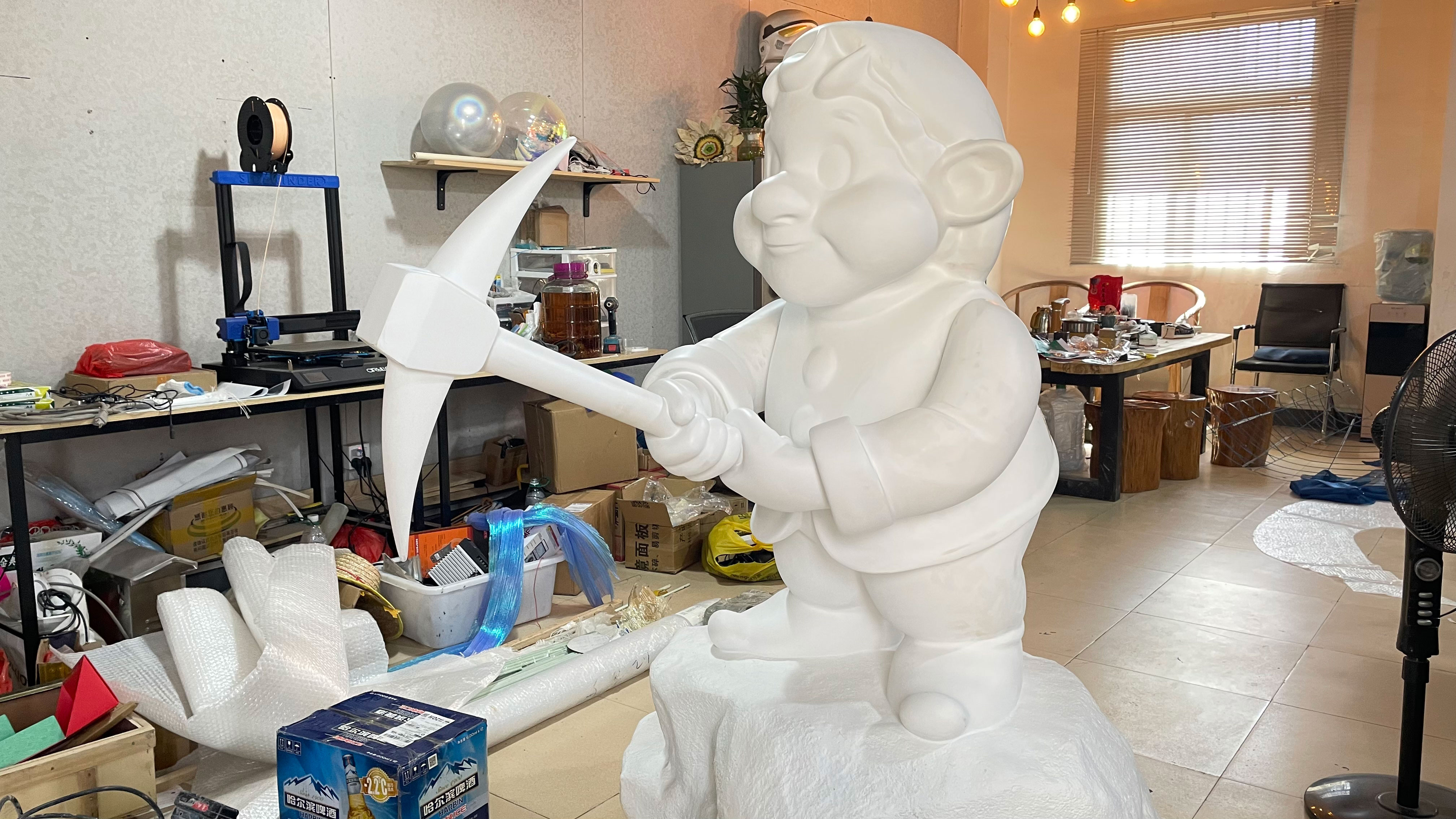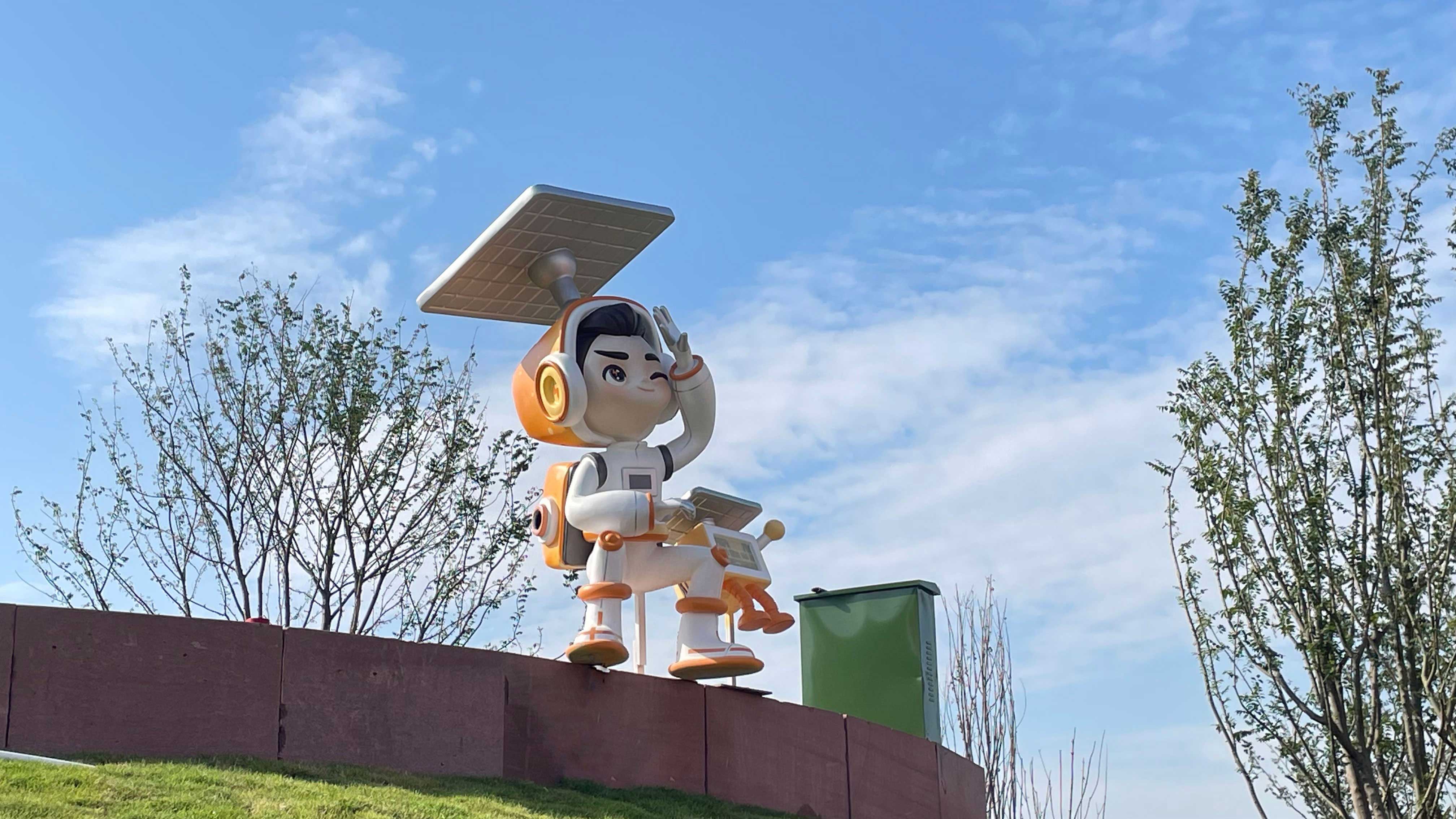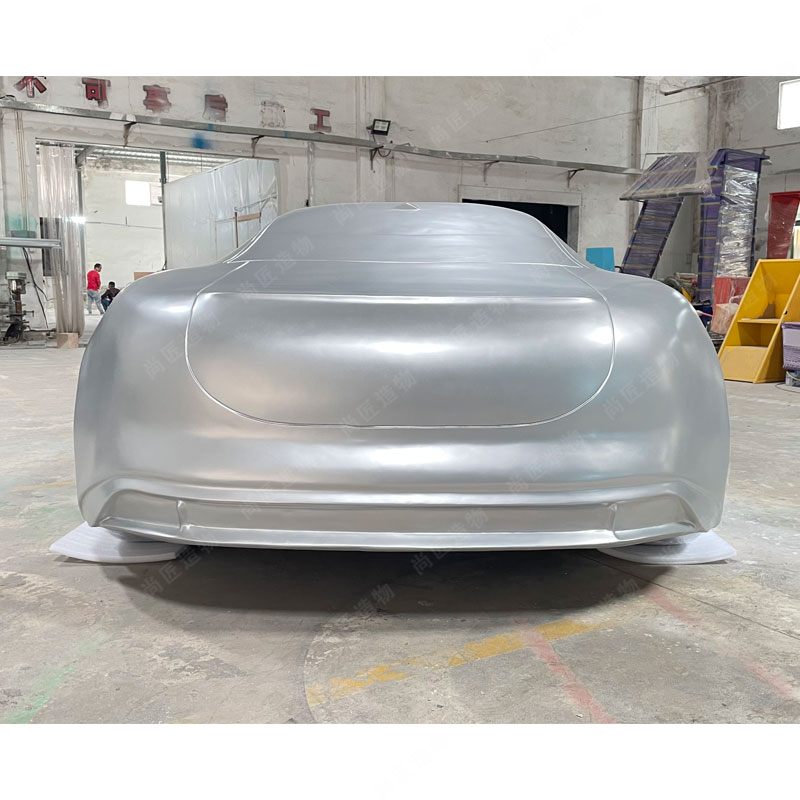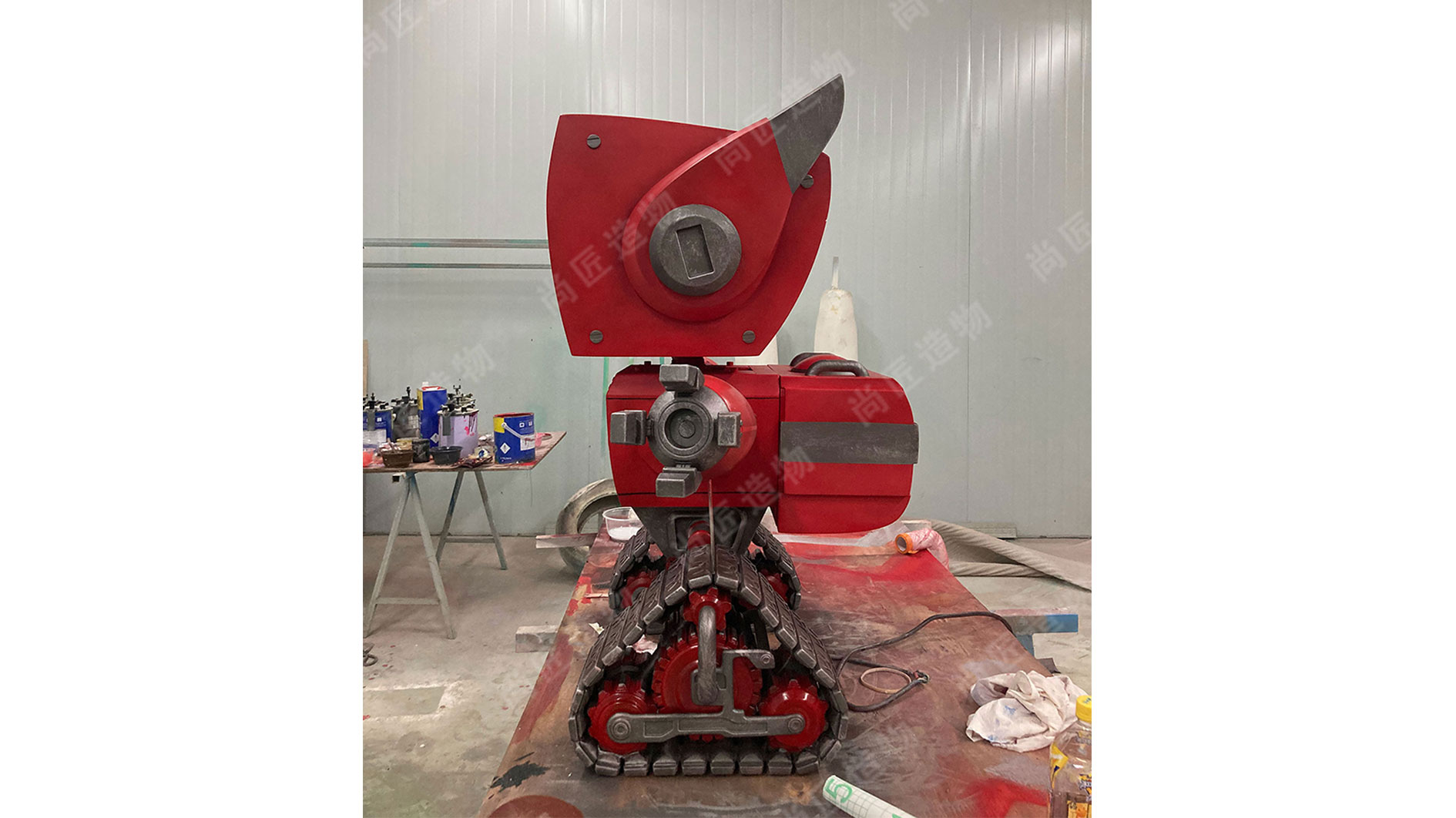Key Takeaways
Mechanized sculpture installations represent a fusion of artistic expression and mechanical engineering, creating dynamic artworks that challenge traditional static forms. These kinetic pieces rely on motorized components—gears, pulleys, or hydraulic systems—to produce motion, transforming sculpture into a multisensory experience. A defining feature is their ability to integrate steampunk aesthetics, where industrial materials like brass and iron merge with futuristic designs, evoking both nostalgia and innovation.
“Kinetic art isn’t just about movement; it’s about engineering emotion,” notes sculptor Lila Marquez. “Every gear turn must align with the artwork’s narrative.”
While motorized elements drive these installations, artistic vision dictates their purpose. For example, some pieces use stainless steel sculpture techniques to ensure durability in outdoor settings, blending practicality with visual impact. Interactive components, such as motion sensors or touch-activated mechanics, further engage audiences, inviting them to become part of the artwork’s story.
Tip: When viewing kinetic installations, observe how engineering principles like balance and torque influence the sculpture’s rhythm—subtle details often reveal the artist’s technical mastery.
As kinetic art evolves, its presence in public spaces grows, transforming parks and urban centers into evolving galleries. This shift reflects a broader trend: technology isn’t replacing artistry but amplifying its possibilities.

Mechanized Sculpture Installations Defined
Mechanized sculpture installations represent a fusion of artistic expression and mechanical engineering, where static forms gain dynamic life through programmed or responsive movement. These works integrate components like motors, gears, and sensors to create kinetic experiences that challenge traditional notions of sculpture. Unlike conventional art pieces, mechanized installations often respond to environmental stimuli—such as light, sound, or viewer interaction—transforming passive observation into active engagement.
The term "mechanized" distinguishes these works from simpler kinetic sculptures, emphasizing deliberate engineering complexity. For example, a steel sculpture might incorporate hydraulic actuators to mimic organic motion, while another uses Arduino-controlled servos to synchronize moving parts with audio rhythms. This interplay between mechanics and aesthetics reflects a broader trend in contemporary art, where creators collaborate with engineers to bridge technical precision and creative vision.
| Feature | Traditional Sculpture | Mechanized Installation |
|---|---|---|
| Movement | Static | Programmed/Responsive |
| Interaction | Visual observation | Sensor-based engagement |
| Materials | Stone, bronze, wood | Metals, electronics, polymers |
| Design Process | Solo artistic focus | Interdisciplinary teams |
By merging industrial materials with artistic intent, these installations redefine spatial narratives in both gallery settings and public spaces. Their evolving nature—often requiring maintenance and recalibration—highlights the delicate balance between mechanical reliability and artistic vulnerability. As kinetic art advances, mechanized works continue to push boundaries in how audiences perceive the relationship between art, technology, and time.

Kinetic Art: Movement Meets Engineering
Kinetic art transforms static forms into dynamic experiences by integrating principles of physics and engineering. Unlike traditional sculpture, which prioritizes permanence, kinetic works rely on balanced forces, pivot points, and energy transfer to create controlled motion. Early pioneers like Alexander Calder introduced mobiles that responded to air currents, but modern mechanized installations employ motors, sensors, and programmable logic controllers to orchestrate precise movements. These systems often draw from mechanical engineering concepts—such as torque calculations, gear ratios, and material stress limits—to ensure both aesthetic impact and structural integrity.
Artists collaborate with engineers to solve challenges like minimizing friction in rotating joints or synchronizing motorized components. For example, realistic sculpture projects often incorporate hydraulic systems to mimic organic motion, blending technical precision with lifelike expression. This fusion of disciplines expands artistic possibilities while demanding rigorous problem-solving, as even minor miscalculations can disrupt a sculpture’s rhythm or stability. By treating motion as both medium and metaphor, kinetic art bridges the gap between industrial innovation and creative experimentation, inviting viewers to witness engineering principles in poetic action.
Steampunk Aesthetics in Modern Sculptures
Steampunk aesthetics inject a retro-futuristic charm into mechanized sculpture installations, blending Victorian-era industrial design with imaginative technology. This style often incorporates brass fittings, exposed gears, and weathered metals, evoking an alternate timeline where steam power never faded. Artists leverage these visual elements to create kinetic works that feel simultaneously antique and avant-garde—a deliberate contrast to sleek, contemporary designs. For instance, rotating clockwork mechanisms might drive sculptural components, their rhythmic motions echoing 19th-century machinery while interacting with modern sensors.
The genre’s appeal lies in its narrative quality, with many installations suggesting fictional histories or parallel worlds. A growing number of creators are combining steampunk motifs with Cartoon sculpture techniques, introducing whimsical characters into mechanically complex environments. Such hybrids challenge perceptions of kinetic art as purely abstract, instead offering storytelling through moving parts. While maintaining historical references, these works often critique modern industrialization through their “aged” appearances, inviting viewers to reflect on technological progress. This stylistic choice not only enhances visual intrigue but also strengthens the connection between mechanical function and artistic intent—a recurring theme in kinetic installations.
Motorized Components and Artistic Vision
While engineering principles form the backbone of mechanized sculpture installations, their true power lies in how artists harmonize motorized components with creative intent. Gears, pulleys, and servo motors cease to be mere functional parts when calibrated to express rhythm, tension, or narrative. For instance, a rotating fiberglass sculpture embedded with kinetic elements might mimic organic growth patterns, translating mathematical precision into visual poetry. Artists often balance industrial materials like steel or aluminum with softer, fluid motions to evoke contrasts between mechanization and natural movement. This duality is particularly evident in steampunk-inspired works, where exposed clockwork mechanisms become aesthetic statements rather than hidden technical features. By synchronizing motion speed, direction, and synchronization, creators transform cold mechanics into emotive performances—a slow-spinning armature might symbolize contemplation, while rapid, erratic movements could express urgency. The challenge resides in maintaining mechanical reliability without compromising the artwork’s conceptual depth, requiring equal mastery of torque calculations and metaphorical storytelling.

Interactive Elements in Kinetic Installations
Kinetic sculptures transcend static observation by inviting physical engagement. Unlike traditional art, these installations often incorporate motion sensors, pressure plates, or touch-activated interfaces that respond to audience interaction. For example, a rotating metal piece might accelerate when viewers clap, or LED patterns could shift as people move through the space. This fusion of art and interactivity transforms spectators into co-creators, blurring the line between observer and participant.
Some artists integrate programmable logic controllers to enable real-time adjustments, allowing installations to "learn" from repeated interactions. Take the IP character sculpture, which uses motion-tracking cameras to mirror viewers' gestures with articulated limbs. Such systems rely on precise engineering to ensure responsiveness without compromising structural integrity. While interactivity enhances accessibility, it also demands robust design—components must withstand frequent use while maintaining artistic coherence.
This dynamic relationship between human input and mechanical output reflects kinetic art’s broader goal: to make movement a dialogue rather than a spectacle. As audiences engage, they unconsciously explore the underlying principles of physics and engineering, connecting artistic vision to tangible experience.

Engineering Principles Behind Moving Art
Kinetic sculpture installations rely on foundational engineering concepts to achieve controlled, sustainable motion. At their core, these works integrate principles from mechanics, physics, and materials science to balance artistic intent with functional durability. For instance, rotational systems often employ gear trains to regulate speed, while linear movements might use pulley systems or hydraulic actuators. Artists frequently collaborate with engineers to calculate forces like torque and friction, ensuring components withstand repetitive stress without compromising aesthetics.
Material selection plays a critical role—aluminum alloys or carbon fiber may replace traditional bronze or stone to reduce weight while maintaining structural integrity. Computational modeling tools, such as finite element analysis (FEA), help predict how sculptures respond to wind, temperature shifts, or human interaction. This technical groundwork allows kinetic art to evolve beyond static forms, creating seamless interactions between motion and environment. By merging disciplines, these installations demonstrate how engineering not only enables artistic innovation but also expands the boundaries of what sculptural mediums can achieve.
Blending Technology with Sculptural Creativity
Modern mechanized sculpture installations thrive on the seamless integration of technical innovation and artistic expression. While traditional sculptures rely on static forms, these kinetic creations employ motors, sensors, and programmable systems to animate materials like metal, wood, or recycled components. Artists often collaborate with engineers to balance aesthetic intent with mechanical feasibility, ensuring movements align with symbolic themes—such as mimicking natural rhythms or critiquing industrialization.
Steampunk influences frequently surface, combining vintage gears and exposed machinery with futuristic motion patterns. This duality highlights how technology can enhance, rather than overshadow, creative vision. For instance, a sculpture might use Arduino microcontrollers to choreograph precise rotations, transforming rigid steel into a fluid, dance-like display. Such works challenge perceptions of art as passive, inviting viewers to contemplate the relationship between human ingenuity and machine logic.
This fusion sets the stage for interactive elements, where audience engagement further blurs the line between creator and spectator.

Evolution of Kinetic Art in Public Spaces
The integration of kinetic art into public spaces reflects a gradual shift from static monuments to dynamic experiences that engage communities. Early 20th-century pioneers like Naum Gabo and Alexander Calder introduced foundational concepts of movement in sculpture, though their works often remained confined to galleries. By the mid-1900s, advancements in materials and engineering enabled artists to scale kinetic principles for outdoor settings. The 1960s-70s saw experimental public installations using wind, water, or mechanical systems to create motion, though these were frequently seen as novelties rather than serious art.
Today’s mechanized sculpture installations merge refined engineering with artistic intent, responding to urban environments and viewer interactions. Cities now commission kinetic works to revitalize plazas or transit hubs, prioritizing durability and safety without sacrificing creativity. Modern pieces often incorporate programmable motors, solar power, or responsive sensors, aligning with sustainability goals. This evolution mirrors broader societal trends—public art is no longer just decorative but a tool for sparking dialogue, celebrating technology, and redefining how people experience shared spaces. As engineering and art continue to converge, kinetic installations increasingly serve as landmarks that embody both cultural identity and innovation.
Conclusion
Mechanized sculpture installations represent a unique intersection of artistic ambition and technical innovation, closing the gap between static forms and dynamic expression. These works challenge traditional notions of sculpture by integrating movement, interactivity, and engineering—elements that transform viewers into active participants rather than passive observers. While their mechanical components demand precision, the true power lies in how artists balance functionality with emotional resonance. From steampunk-inspired gears to sleek, modern actuators, each piece reflects a dialogue between human creativity and machine logic. As kinetic art continues evolving in public spaces, it invites broader conversations about technology’s role in shaping cultural experiences. Far from mere spectacle, these installations remind us that art thrives not in isolation, but through its ability to adapt, engage, and reimagine the world around us.
FAQs
How do mechanized sculpture installations differ from traditional sculptures?
Unlike static sculptures, these installations incorporate moving parts powered by motors, gears, or sensors. This motion transforms the artwork into a dynamic experience, often responding to environmental factors or viewer interaction.
What engineering principles are essential for kinetic art?
Mechanized sculptures rely on mechanics, material science, and electronics. Artists collaborate with engineers to balance structural stability with fluid movement, ensuring components like motors and pulleys operate seamlessly within the design.
Can viewers interact with these installations?
Many kinetic sculptures include interactive elements, such as motion sensors or touch-sensitive panels. These features allow the artwork to change speed, direction, or pattern based on audience input, creating a collaborative creative process.
Why is steampunk a common aesthetic in modern kinetic art?
Steampunk’s fusion of Victorian-era design with industrial machinery aligns with the tactile, mechanical nature of these installations. Exposed gears, brass fittings, and weathered metals emphasize the relationship between art and engineering.
Are mechanized sculptures durable in outdoor public spaces?
Weather-resistant materials like stainless steel or treated polymers are often used. Regular maintenance ensures motors and moving parts withstand environmental stressors, making them suitable for long-term public display.
How has technology expanded the possibilities of kinetic art?
Advances in microcontrollers, renewable energy systems, and lightweight alloys enable more complex movements and sustainable designs. This evolution allows artists to explore larger scales and intricate kinetic patterns.
 ch
ch English
English






